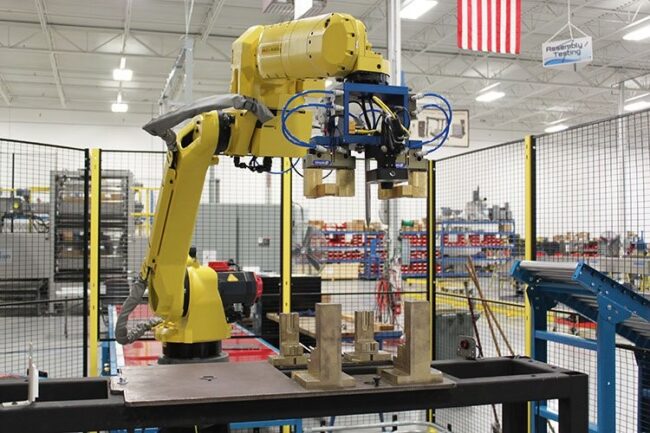Over the past decade, the manufacturing industry has experienced an exponential increase in the number of machine-tending robots.
More and more industries, including your competitors, are investing in this technology, instead of relying on workers to operate their machines.
And this move has made all the difference in the market.
The truth is, there’s a lot to benefit by automating your machine tending process. Based on case studies from various industries, the robots will help address most of the problems you face in production.
Nonetheless, if you’re skeptical about investing in robotic machine tending, here’s a breakdown of what it can do for your business.
1. Improved Productivity
Machine tending is a crucial process in production. It plays a pivotal role in determining the productivity of a business. Human operators, regardless of how good they are, can only do so much.
At the end of the day, they have to go home. If your business doesn’t have the capital to hire multiple machine tending operators, that means that operations have to stop for the night.
With robotic machine tending, operations never have to halt. The robots can work on both shifts, days and nights and will only stop for maintenance breaks.
This means that your production uptime drastically improves, and so does the production output.
2. Accuracy in repeatability
One of the biggest differences between workers and robots is their accuracy – especially when dealing with repetitive tasks.
Workers often get tired and distracted whenever they handle such tasks, which affects the quality of their work. Machine tending operators are no different.
Robots, on the other hand, work purely under the instructions of their programming. Whether manned or unmanned, they’ll consistently complete the machine tending tasks with minimal margin of error.
This will be evident in the final products after production: all high-quality.
Moreover, besides machine tending, these robots can also complete pick and place tasks, packaging, and some light assembly tasks – making them more than useful for your floor space.
3. Extensive uses in dangerous areas
For years, there has been a hostile robot-human relationship in the industrial workspace, with the traditional robots playing a key part in this.
However, modern robots, such as the collaborative robots have been designed to alleviate this situation. It’s now possible for robots and workers to co-exist in the workplace.
Fitted with numerous micro-cameras and sensors, machine tending robots, are on the frontline of this change. These robots can easily detect the presence of other workers, and instantly halt their operations to avoid causing them harm.
They can also be deployed in harsh working environments of the industry and reduce the number of workers lost to injuries and illnesses.
4. Increased flexibility
Unlike human workers, a machine tending robot can tend to more than one machine at a time, if programmed correctly.
This means that you don’t need multiple robots for your machine tending. One or two robots can work wonders for your production.
The robots can also be programmed to work with other parts and components as well.
Thanks to their sensors and robotic vision, these robots can detect machines fed-in, and alter the position of parts, to ensure they are well-positioned.
This gives your industry the flexibility to work on new products and improve their existing production structure, without losing uptime.
Also read: Benefits of Robotic Process Automation
5. Cost-effective and a fast ROI
Besides improving your uptime, robots can also help you cut down your operation costs. Since they don’t need good lighting or even heat, the robots help you cut down your energy costs.
They also reduce the number of defective products in production thanks to their accuracy, and their flexibility increases your production volume.
Furthermore, these robots have an ROI of about 12 months, which is way better than most machines in the market.
Final thoughts
Robotic machine tending is the future for the manufacturing industry. Soon, it’ll be impossible for any industry to compete in the market without this technology.
That said, it’s clear that robots for machine tending will not only boost your productivity, but they’ll also cut down your costs and improve your efficiency.
So, if you’re still wondering if you should invest in this technology, there’s your answer.




